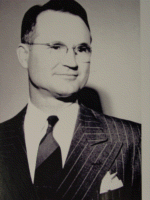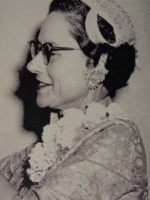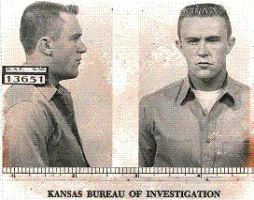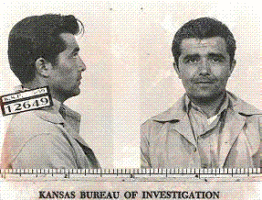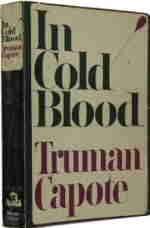 SKC Films Library |
| SKC Films Library >> Sociology >> Social Pathology >> Criminology |
| Clutter Family Murders On the morning of Sunday, November 16, 1959, Finney County Sheriff Earl Robinson, Garden City Police Chief Mitchell Geisler, and Assistant Chief Ritch Rohleder were called to a farm house in Holcomb (about ten miles from Garden City) because friends had been unable to contact the family that lived there. Inside, the policemen discovered the bodies of Herbert Clutter (48), his wife Bonnie Mae (45), and their two children, Kenyon Neal (14) and Nancy Mae (15); all four had been shot in the head with a shotgun, and Herbert had also had his throat slashed. There were signs that the house had been ransacked, but aside from one bloody bootprint in the living room, some spent shotgun shells, and a tire track in the driveway, there was no evidence indicating who had killed the family. Clutter Family home Herbert Clutter Bonnie Mae Clutter Kenyon Neal Clutter Nancy Mae Clutter The Clutter Family Murders made national news headlines, due to the violent nature and seeming randomness of the crime. The two men were found in the basement, while each of the women were found in their respective bedrooms. All four victims had been bound, and there was some indication that Nancy may have resisted a sexual assault. No one in the area had any reason to dislike the family, leaving residents to fear that a random killer was in their midsts. With very little evidence to work with, the Garden City Police Department turned to the Kansas Bureau of Investigation for help, and agent Alvin Dewey soon took over as chief investigator. About ten days after the murders, Floyd Wells, an inmate at the Kansas State Penitentiary in Lansing, sent a message to Dewey indicating he had information about who had killed the Clutters. Wells, who had once worked as a farmhand for the Clutters, told Dewey that Herbert Clutter was known to keep large sums of money in his house and that that information had been passed to Richard Eugene Hickock and Perry Edward Smith, two petty criminals who had recently been paroled from Lansing. A check of the two mens' records, along with an interview with Smith's family, led Dewey to believe Wells's story, and a nationwide manhunt was launched. Richard Hickock Perry Smith Hickock and Smith had initially fled to Kansas City after the murders, but had been forced to leave for Mexico after Hickock wrote a number of bad checks. In Mexico, the men pawned a pair of binoculars they had taken from the Clutter house, and then hitchhiked through California on their way to Omaha, Nebraska. From Omaha, they went to Iowa, where they stole a car, and then returned to Kansas City. After traveling to Florida, where they were suspected of committing more crimes, they drove to Las Vegas. On December 31, 1959, two Las Vegas policemen saw a car with out-of-state plates parked outside of a post office and, as per normal procedure, checked the plate number against a list of stolen cars. Perry and Hickock were arrested as they got into the car they had stolen in Iowa, after having picked up a package containing the boots Smith had worn at the Clutter residence. Upon learning of Hickock and Smith's arrest Dewey went to Las Vegas, where he obtained confessions from both men. Hickock and Smith both admitted to having targeted the Clutter Family because of the money supposedly kept in the home, and to having entered the house knowing they would kill everyone present in order to get rid of eyewitnesses. Although Smith repeatedly claimed that he alone had killed all four family members, both men were tried for murder in Finney County (Kansas) District Court, and were convicted on March 29, 1960. It was revealed during the trial that, instead of the thousands of dollars they had intended to get, Hickock and Perry walked out of the Clutter house with about $40 in cash, the binoculars they had pawned in Mexico, and a transistor radio. Hickock and Perry were sentenced to death, and were hung at Leavenworth Federal Penitentiary on April 14, 1965. Author Truman Capote read about the Clutter Family Murders in a New York Times article on November 16, 1959, and was so intrigued he immediately traveled to Kansas. With help from fellow author Harper Lee, Capote interviewed friends of the Clutter Family, two older Clutter daughters who had already moved out of the home and started their own lives, and anyone else connected to the case who would talk to him; he also followed the day-to-day investigation and eventually compiled about 8,000 pages worth of notes and interviews. Capote subsequently used his notes to write In Cold Blood, which was first published as a four-part serial in The New Yorker, beginning September 25, 1965. Richard Brooks adapted the novel into a screenplay, and the movie, starring Robert Blake as Smith and Scott Wilson as Hickock, was released in 1967.
|
| SKC Films Library >> Sociology >> Social Pathology
>> Criminology This page was last updated on November 14, 2017. |

